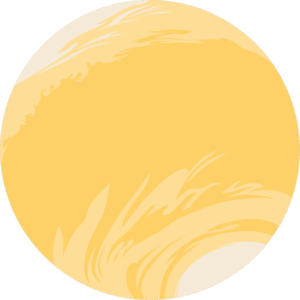The Downlink • Mar 17, 2023
Volcanic Venus, myriad moons, and space sonification
Space Snapshot

This image uses data from NASA's Magellan spacecraft to show Maat Mons, the tallest volcano on Venus. Magellan imaged the surface of Venus from orbit in the early 1990s, collecting data that continue to yield new discoveries about the planet. Just this week, researchers studying Magellan images announced their discovery of the first-ever signs of possible active volcanism on Venus. Image credit: NASA/JPL.
You love space, now take action
This weekly newsletter is your toolkit to learn more about space, share information with your friends and family, and take direct action to support exploration. Anyone can subscribe at planetary.org/connect to receive it as a weekly email.
Mission Briefings


A newly discovered asteroid has a small chance of hitting Earth in 2046, but don’t panic. The asteroid, named 2023 DW and discovered on Feb. 2, is the only asteroid that currently ranks higher than zero on NASA’s Torino Impact Hazard Scale, which categorizes the projected risk of an object colliding with Earth. Still, 2023 DW’s ranking of one on the scale means that “the chance of collision is extremely unlikely with no cause for public attention or public concern.” As more observations better define the asteroid’s orbit, the probability of impact will drop and likely go to zero. Pictured: An illustration of the asteroid. Note that its physical characteristics have not actually been established yet. Image credit: NASA.

The Biden Administration’s proposed NASA budget is out. The $27.2 billion budget proposed for NASA's 2024 fiscal year, if approved by Congress, would represent a 7% increase over 2023 levels. The Planetary Society is supportive of this budget request, but also calls on Congress to prevent delays to the VERITAS Venus mission and the Mars Sample Return program.

NASA is making plans for how it will deorbit the International Space Station. The agency’s latest budget request includes funding to develop a module that would tug the station to a lower orbit to ensure it reenters Earth’s atmosphere over the South Pacific, where large spacecraft can most safely crash. The station, which has been continuously occupied since 2000, is scheduled to come down in 2031.

Get ready to find out which astronauts will get to fly around the Moon. NASA and the Canadian Space Agency (CSA) are due to announce the crew of the Artemis II mission on April 3. This crew, which will include three NASA astronauts and one CSA astronaut, will conduct a 10-day mission beyond the Moon, testing the Orion spacecraft’s systems before it takes another crew to the lunar surface.
From The Planetary Society


Space images sound as beautiful and intriguing as they look. This image taken by NASA's Chandra X-Ray Observatory shows about 5,000 black holes over the area of the sky covered by the full Moon, the highest concentration of black holes ever seen. This is a stunning sight, but how might it sound? Kim Arcand, Chandra visualization scientist, joins this week’s Planetary Radio to share her team’s new album “Universal Harmonies,” a collection of sonified observations taken by the space telescope that aims to make space images more accessible to people with low or no vision. Pictured: The colors in this image represent different levels of X-ray energy detected by Chandra. Here the lowest-energy X-rays are red, the medium band is green, and the highest-energy X-rays are blue. Image credit: NASA/CXC/Penn State/B.Luo et al.

Meet Jupiter’s tiny new moons. With 12 moons added to its official count, Jupiter now has the largest number of natural satellites in the Solar System. This may well change, as new Saturnian candidate moons await confirmation. Read more about how we find these tiny moons, and what they can teach us about our corner of the Cosmos.

Bill Nye is excited about the year in space, and you should be too. The Planetary Society’s CEO joined the latest This Week in Space podcast to talk about exploration milestones to look forward to, achievements he’s proud of, and what it takes to engage the public in the adventure of science.
What's Up

Super bright Venus shines in the evening western sky, with bright Jupiter below it. Mars is high overhead, looking reddish. Just before dawn, Saturn is starting to come up very low to the east. Learn more about what the rest of the month’s night skies have in store for you.
Wow of the Week

Space exploration technology is the key to all cosmic “wows.” This chart shows how the number of known Jovian moons skyrocketed around the year 2000, when digital imaging technology started being applied to large telescopes. What new technology will unlock the next leap forward in our understanding of the Cosmos? Image credit: Data by Scott Sheppard, visualization by Jason Davis.
Send us your artwork!
We love to feature space artwork in the Downlink. If you create any kind of space-related art, we invite you to send it to us by replying to any Downlink email or writing to [email protected]. Please let us know in your email if you’re a Planetary Society member!


 Explore Worlds
Explore Worlds Find Life
Find Life Defend Earth
Defend Earth


